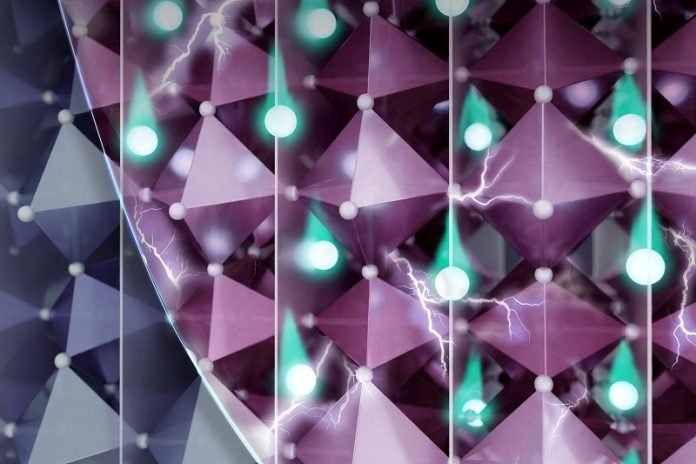
Since the 1940s, researchers have been interested in a substance known as niobium oxide, specifically a version called T-Nb2O5.
It’s special because it lets tiny particles called lithium ions move super fast within it.
The faster these ions can move, the quicker a battery can be charged.
Think of it like this: if lithium ions are cars, then T-Nb2O5 is a superhighway that lets them race around really quickly.
But there was a problem: It was tough to create high-quality thin layers, or “films,” of this niobium oxide.
These films are essential if we want to use this substance in real-world devices.
This problem happened because T-Nb2O5 has a very intricate structure, and there are lots of similar, but slightly different versions of niobium oxide.
In a study published in Nature Materials, a team from the University of Pennsylvania, Max Planck Institute, and University of Cambridge cracked the problem.
They were able to grow thin, single-crystal layers of T-Nb2O5 that were perfect for lithium ions to move super quickly.
This big improvement could lead to superfast battery charging and more efficient computers.
Zhen Jiang, one of the team members, explained that our current methods of storing lithium in battery materials change their structure.
But the new method the team developed lets lithium ions move without messing with the T-Nb2O5’s structure.
Team member Andrew Rappe gave a neat example to explain how it works. He likened T-Nb2O5 to a multilevel car-parking structure where the lithium ions are cars, and the structure of T-Nb2O5 creates ramps that let the “cars” move up and down.
By growing T-Nb2O5 so these ramps run up and down, the team made it possible for the lithium ions to move way faster.
This change lets them switch the electrical properties of the material quickly and in big ways.
Not only that, the team also found that as the number of lithium ions changed, the material underwent several changes.
These changes allow it to switch from being an insulator (which blocks electricity) to a metal (which conducts electricity). The resistance of the material drops by a whopping factor of 100 billion.
To predict how the material would behave under different conditions, the team from Penn used special calculations called density functional theory calculations.
With this, they figured out how to effectively control and change the electronic properties of the T-Nb2O5 thin films.
This research is a good example of how computer simulations can work with experiments to help us understand important battery and electronic materials.
By controlling these thin films’ direction, the researchers can study how they behave, which is key to understanding how these materials work.
Moreover, they found out they could change the voltage (the force that pushes electricity) at which the material becomes a metal by tweaking the chemical makeup of a component called a “gate” electrode.
This discovery could open up even more uses for the technology.
One of the researchers, Stuart S. P. Parkin from the Max Planck Institute, says, “Our understanding of T-Nb2O5 and similar complex materials has been dramatically enhanced, setting the course for a more sustainable and efficient future.”
This work shows the power of teamwork and curiosity in pushing science and technology forward.
The study was published in Nature Materials.
Follow us on Twitter for more articles about this topic.
Source: University of Pennsylvania.



